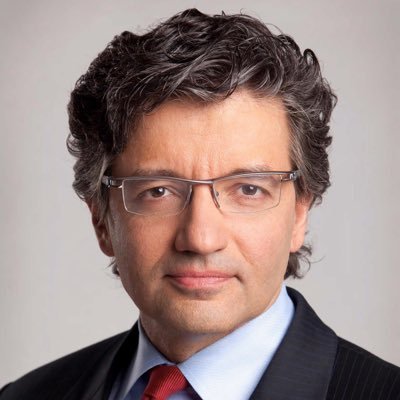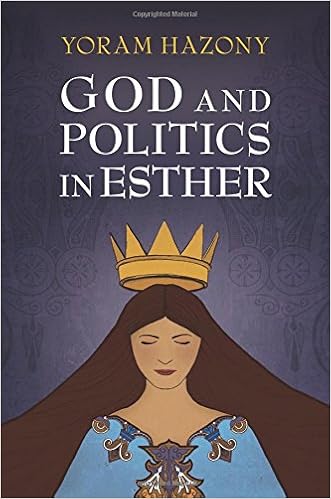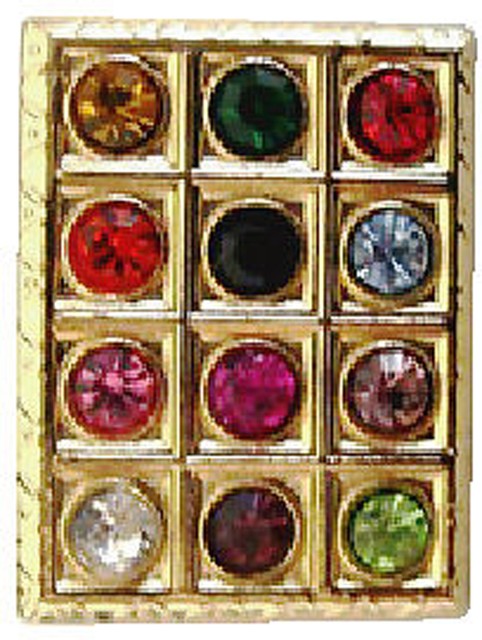CHULA VISTA, California — One of the most remarkable modern day exegetes of the 19th century was the Italian biblical commentator, Samuel David Luzzato, better known by many as Shadal (1800-1865). His approach to the contextual meaning of a passage is what Jewish exegetes call, “the peshat.” While most medieval exegetes make it a habit to cite other medieval exegetes, Shadal makes it a point to examine and critique many of the well-known Christian scholars’ expositions of his era, as well as other leading Jewish scholars of his day, e.g., Moses’ Mendelsohn’s Biur Commentary, which he criticizes over forty times!
Many Orthodox scholars—past and present—might look askance at the various sources Shadal brings into his commentary. Shadal’s list of non-Jewish scholars included, Nicholas de Lyre (1270-1339), Samuel Bochart (1599-1667), Heinrich Gesenius (1786-1842), who wrote one of the most important Hebrew-Chaldean lexicons of all times, and a list of many scholars. Some learned rabbinical scholars might think that bringing the words of the German anti-Semitic scholar Johann David Michaelis (1717-1791) into a discussion on the Torah could certainly seem inappropriate and even disrespectful. Still, Shadal treated him and others with a modicum of intellectual respect even though some of the German attitudes were truly contemptuous when it came to granting Jews their civil rights. For today’s critical age, Shadal teaches us to be open-minded when considering the truth of an interpretation.
A reader cannot help but be impressed with Shadal’s mastery of the classical literature and cites Roman Diodorus of Sicily, Aristotle, Josephus and Philo of Alexandria as effortlessly as he does the Talmud.
One of the more endearing qualities Shadal demonstrates is way he cites the views of his students in clarifying an interpretation of a biblical text. Lesser men would take credit for other’s interpretive insights, but Shadal takes great pride in inspiring a new generation of Torah scholars (cf. pp.63-64, p. 87). One of his favorite students, Rabbi Abraham Hai Mainster, is cited sixteen times in his Exodus commentary! Yet Shadal could also be caustic and dismissive of other Jewish scholars’ interpretations, as he was with Moses Mendelsohn’s commentary (p. 37 on Exodus 1:9 (p. 88).
Commenting on Exodus 4:9, Shadal cites a well-known popular view that Moses was a chronic stutterer (Ibn Ezra), but Rashbam thinks this is a baseless and that, “This idea is not contained in the words of the Tannaim, and one need not mind the irreligious books.” Actually, this view is found in the Peshitta and some of the early midrashim.[1] Shadal added further, “Moses was not fluent in the Egyptian language, but this, too, is truly unlikely since Moses had been raised in Egypt and in the king’s house.” (p. 73). Ibn Ezra notes that “God would help him annunciate words that he had difficulty articulating.” Shadal scoffs at Ibn Ezra’s remark:
If so, let Ibn Ezra show us which letters are not found in the passages that Moses spoke to the entire people—apart from the fact that it is blasphemous to say that God would choose as His messenger, who would give the Torah to his people, a man who would have to choose the words that he could pronounce (p. 74). [2]
Shadal offers a different explanation, namely, he lacked eloquence and was unskilled in public speaking. While this is a plausible reading, Shadal did not consider the possibility that the problem was not that he was not fluent in the Egyptian tongue (which is very unlikely considering he was raised there since he was an infant). Rather, the problem was his lack of fluency in the Hebrew language! He spoke with a very heavy accent, which might have been difficult for native-born Israelites to understand!
Concerning the identity of the Hebrew midwives (Exod. 1:15), Shadal mentions a debate among ancient and modern commentators as to the identities of the midwives; some think they were Egyptian or alternatively, Hebrew. The former think that it is unlikely that the Hebrew midwives would contribute toward the genocide of their own people by deliberately murdering their male offspring. Shadal suggests a third view, namely, the midwives were not Egyptian, but were another Semitic people who lived in Goshen who assisted Pharaoh. Among modern biblical scholars, W.H.C Propp concurs with Shadal.[3] (This reviewer finds the contrarian interpretation more contextually convincing.)
I was curious to see how Shadal would answer the famous question as to how many Israelites left Egypt. Here is a brief quotation how he handles that conundrum:
The Sages said the Israelite women bore six at a time (Exodus Rabbah 1:7) , and ancient writers attest that the Nile waters increased fertility and that the Egyptian women usually bore twins or even more than two at a time. Aristotle wrote, “Frequently and in many lands, women bear twins as for instance in Egypt especially (History of Animals, Book 7:4).
Shadal attempts to show other examples from Pliny and others to prove there were approximately 2 million people or more who left Egypt. It was here I referred back to Shadal’s own commentary on Genesis 36:43, where he makes the point of stating that word אֶלֶף (ʾelep) can also mean “clan,” family, or “military unit” (cf. 1 Sam. 10:19). This could suggest that the number that left Egypt was not 600,000 men of military age, but 600 military units—a far smaller number! Alternatively, the number may be more symbolic (Cassuto) or pertain to a later time when a census was taken from the entire nation once it had settled; in such a scenario, future generations may have felt that they—literally—had emblematically participated in the Exodus from Egypt.
When considering the naturalistic attitude Shadal has concerning miracles, imagining an army of 600,000 people dissipates once we render elep as clan—especially when the Egyptian army that took on the Hittites in the battle of Kadesh was only 20,000 soldiers! Nobody at that time in history had a standing army of 600,000 except for possibly the ancient Chinese. This interpretation seems more plausible than Shadal’s. It makes biblical text more understandable without wondering how the Sinai Peninsula could possibly hold 2.5 million people without becoming a bio-hazard from the human waste products alone! In addition, 2.5 million people could never have crossed the Sea of Reeds in merely one night.
In any event, despite Shadal’s criticism of Maimonides, the two thinkers share a similar world-view regarding natural religion and the divine unfoldment of the miraculous. In his examination of the plague of blood (Exod. 7:19), Shadal reluctantly approves of Eichorn’s opinion noting that all of the ten plagues were:
. . .natural phenomena that commonly occurred in Egypt ever year, but that Moses’ intention was to make Pharaoh understand that it is the Lord, the God of the Hebrews, Who activated these phenomena, and that He was the Ruler of all the earth” (p. 103).
But Shadal adds that the effects of the river’s bloody appearance was more onerous:
. . . novel in its ill-effects, to the extent that all the fish within it died. . .This is proof that water’s foul odor and quality were more intense than in other years and departed from the course of nature, as if the water had actually turned to blood” (p. 104).
Modern biblical scholars subscribing to religious naturalism take a somewhat different approach, pointing out that it is the intensity and the synchronicity of the plague that the Torah teaches is miraculous. Regarding the Nile River turning into blood, it is important to differentiate between Upper Egypt (the southern portion that is mountainous) and Lower Egypt (the northern portion that is flat). A heavy inundation from the Ethiopian plateau’s earth produced the reddish color in the Nile, whose soil was full of reddish-colored microorganisms called flagellates, turned the Nile blood red, undrinkable and foul smelling.
The smiting of the firstborn in Egypt is of special interest. Shadal dismisses the view of Eichorn who conjectured that a pestilence affecting young men was responsible for killing the Egyptian males. Shadal agrees with the converted Ernst Rosenmuller’s view that such a pestilence would not single out the Egyptian firstborn in particular (p. 146). Shadal’s citations of other commentators—Jewish and Christian—sometimes suggest a more interesting alternative to the view Shadal proposes. Some modern biblical scholars think the firstborn of Egypt might have died from contaminated produce reserved for the firstborn.
Shadal did not consider the possibility that bekhor can sometimes also mean “excellent” (par. to ʿelyon, “highest,” Ps. 89:28[27]), and denoting the superlative (elative), hence with respect to Exodus 12:29, it could denote the “flower of Egypt.”
It is a shame Shadal did not consider a more daring but naturalistic interpretation. Citing Rashi, the Russian iconoclastic thinker V. Velikovsky makes the canny observation, “Thus at midnight, the Lord smote all the firstborn in the land of Egypt” (Exod. 12:29) must be read “all the select of Egypt,” as one would say, ‘all the flower of Egypt’ or “all the strength of Egypt.’ “Israel is my chosen: I shall let fall all the chosen of Egypt.” Natural death would usually choose the weak, the sick, the old. The earthquake is different; the walls fall upon the strong and the weak alike. Actually the Midrashim say that “as many as nine tenths of the inhabitants have perished.”[4]
Proof for the scriptural basis in my opinion for Velikovsky’s novel reading can be found in Psalm 114, which could be read as an intrabiblical interpretation of the events leading to the Exodus—one which involved considerable seismic activity:
When Israel came forth from Egypt,
the house of Jacob from an alien people,
Judah became God’s sanctuary,
Israel, God’s domain.
The sea saw and fled;
the Jordan turned back.
The mountains skipped like rams;
the hills, like lambs.
Why was it, sea, that you fled?
Jordan, that you turned back?
Mountains, that you skipped like rams?
You hills, like lambs?
Tremble, earth, before the Lord,
before the God of Jacob,
Who turned the rock into pools of water,
flint into a flowing spring.
(Ps 114:1–8)
In short, I would highly recommend to any reader Daniel Klein’s wonderful new translation of Shadal. This scholar was a very original exegete, but what makes him so compelling and fascinating is the fact that he encouraged all of his students to think for themselves and not merely accept something because of tradition. This approach certainly applies to anyone reading Shadal’s works as well. Creating exciting dialectical discussion with the commentaries is really what Torah study ought to be all about. Shadal’s commentary is full of many original interpretations that will stimulate the mind and heart. Students of Torah everywhere will enjoy Shadal’s Torah commentary, as we look forward to the publication of future volumes. Klein’s introduction is quite informative, but for the purpose of this review, we have only examined a few of the noteworthy comments regarding the Exodus.
[1] L. Ginzberg cites Midrash Yashar Shemot 131b–132b, and, in abridged form, Dibre ha-Yamim 3–4. In ShR 1.26 it is Jethro who advised the test with the burning coal (Legends of the Jews, pp. 482-483)
[2] Shadal’s exposition begs a more subtle question, namely, why does he handle Ibn Ezra so sarcastically? The answer is because that is how Ibn Ezra sometimes spoke of rabbis who came up with interpretations he viewed as nonsensical. For example, in the Book of Genesis 29:17, we read that Leah’s eyes were “tendered eyed” רַכּוֹת (rakkot) and he cites the view of Rabbanu Ephraim who thought that the word רַכּוֹת is written defectively, and the adjective should have been written, אֲרוּכוֹת (arûkot = “long”). Ibn Ezra mockingly replied, that the name “Efraim minus the letter א in his name spells, “parim” (= bull), i.e., only someone who is bullheaded fool would come up with a ridiculous interpretation like that! For this reason, Shadal decided to give Ibn Ezra a taste of his own medicine!
[3] Propp, W. H. C., Exodus 1–18: a new translation with introduction and commentary (New Haven; London: Yale University Press, 2008), Vol. 2., p.137
[4] V. Velikovsky, Ages in Chaos (Garden City, NY: Doubleday & Company, Inc., 1952), pp. 33-34.
*
Rabbi Samuel is spiritual leader of Temple Beth Shalom in Chula Vista, California. He may be contacted viamichael.samuel@sdjewishworld.com. Comments intended for publication in the space below must be accompanied by the letter writer’s first and last name and by his/ her city and state of residence (city and country for those outside the U.S.)






